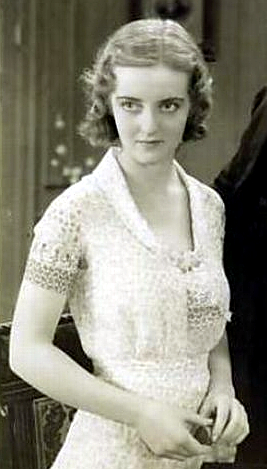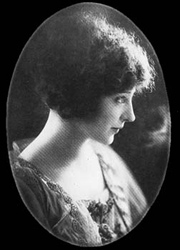|
Edmund Teske
Edmund Rudolph Teske (March 7, 1911 – November 22, 1996) was a 20th-century American photographer who combined a career of taking portraits of artists, musicians and entertainers with a prolific output of experimental photography. His use of techniques like: combined prints, montages and solarizations led to "often romantic and mysterious images". LA Times, November 26, 1996, Accessed online, April 31, 2014 Although he exhibited extensively and was well known within artistic photography circles during his lifetime, his work was not widely known by the public. He has been called "one of the forgotten greats of American photography." Biography Teske was born in |
Chicago, Illinois
(''City in a Garden''); I Will , image_map = , map_caption = Interactive Map of Chicago , coordinates = , coordinates_footnotes = , subdivision_type = List of sovereign states, Country , subdivision_name = United States , subdivision_type1 = U.S. state, State , subdivision_type2 = List of counties in Illinois, Counties , subdivision_name1 = Illinois , subdivision_name2 = Cook County, Illinois, Cook and DuPage County, Illinois, DuPage , established_title = Settled , established_date = , established_title2 = Municipal corporation, Incorporated (city) , established_date2 = , founder = Jean Baptiste Point du Sable , government_type = Mayor–council government, Mayor–council , governing_body = Chicago City Council , leader_title = Mayor of Chicago, Mayor , leader_name = Lori Lightfo ... [...More Info...] [...Related Items...] OR: [Wikipedia] [Google] [Baidu] |
Taliesin West
Taliesin West was architect Frank Lloyd Wright's winter home and studio in the desert from 1937 until his death in 1959 at the age of 91. Today it is the headquarters of the Frank Lloyd Wright Foundation. Open to the public for tours, Taliesin West is located on Frank Lloyd Wright Boulevard in Scottsdale, Arizona. The complex drew its name from Wright's home, Taliesin, in Spring Green, Wisconsin. History Wright and the Taliesin Fellowship began to "migrate" to Arizona each winter in 1935 to escape the harsh Wisconsin winters for Wright's health on his doctor's advice. In 1937 Wright purchased the plot of desert land that would soon become Taliesin West. He paid "$3.50 an acre on a southern slope of the McDowell Range overlooking Paradise Valley outside Scottsdale." Wright believed this to be the perfect spot for such a building: a place of residence, a place of business and a place to learn. Wright described it like this, "Finally I learned of a site twenty-six miles fro ... [...More Info...] [...Related Items...] OR: [Wikipedia] [Google] [Baidu] |
Solarization
The Sabatier effect, also known as pseudo-solarization (or pseudo-solarisation) and erroneously referred to as the Sabattier effect, is a phenomenon in photography in which the image recorded on a Negative (photography), negative or on a photographic print is wholly or partially reversed in tone. Dark areas appear light or light areas appear dark. Solarization and pseudo-solarization are quite distinct effects. Over time, the "pseudo" has been dropped in many photographic darkroom circles and discussions, but the effect that is meant is the Sabattier effect and not the solarization by extreme overexposure (see below). Background Initially, the term "solarization (photography), solarization" was used to describe the effect observed in cases of extreme overexposure of the photographic film or plate in the camera. The effect generated in the dark room was then called ''pseudo-solarization''. Spencer defines the Sabattier effect as: "Partial image reversal produced by brief exposur ... [...More Info...] [...Related Items...] OR: [Wikipedia] [Google] [Baidu] |
Vedanta
''Vedanta'' (; sa, वेदान्त, ), also ''Uttara Mīmāṃsā'', is one of the six (''āstika'') schools of Hindu philosophy. Literally meaning "end of the Vedas", Vedanta reflects ideas that emerged from, or were aligned with, the speculations and philosophies contained in the Upanishads, specifically, knowledge and liberation. Vedanta contains many sub-traditions, all of which are based on a common group of texts called the "Three Sources" (''prasthānatrayī''): '' the Upanishads'', the '' Brahma Sutras'' and the ''Bhagavad Gita The Bhagavad Gita (; sa, श्रीमद्भगवद्गीता, lit=The Song by God, translit=śrīmadbhagavadgītā;), often referred to as the Gita (), is a 700-verse Hindu scripture that is part of the epic '' Mahabharata'' (c ...''. All Vedanta traditions contain extensive discussions on ontology, soteriology and epistemology, though there is much disagreement among the various schools. The main traditions of ... [...More Info...] [...Related Items...] OR: [Wikipedia] [Google] [Baidu] |
Hindu
Hindus (; ) are people who religiously adhere to Hinduism.Jeffery D. Long (2007), A Vision for Hinduism, IB Tauris, , pages 35–37 Historically, the term has also been used as a geographical, cultural, and later religious identifier for people living in the Indian subcontinent. The term ''"Hindu"'' traces back to Old Persian which derived these names from the Sanskrit name ''Sindhu'' (सिन्धु ), referring to the river Indus. The Greek cognates of the same terms are "''Indus''" (for the river) and "''India''" (for the land of the river). The term "''Hindu''" also implied a geographic, ethnic or cultural identifier for people living in the Indian subcontinent around or beyond the Indus River, Sindhu (Indus) River. By the 16th century CE, the term began to refer to residents of the subcontinent who were not Turkic peoples, Turkic or Muslims. Hindoo is an archaic spelling variant, whose use today is considered derogatory. The historical development of Hindu self-i ... [...More Info...] [...Related Items...] OR: [Wikipedia] [Google] [Baidu] |
Christopher Isherwood
Christopher William Bradshaw Isherwood (26 August 1904 – 4 January 1986) was an Anglo-American novelist, playwright, screenwriter, autobiographer, and diarist. His best-known works include '' Goodbye to Berlin'' (1939), a semi-autobiographical novel which inspired the musical '' Cabaret''; '' A Single Man'' (1964), adapted as a film by Tom Ford in 2009; and ''Christopher and His Kind'' (1976), a memoir which "carried him into the heart of the Gay Liberation movement". Biography Early life and work Isherwood was born in 1904 on his family's estate in Cheshire near Stockport in the north-west of England. He was the elder son of Francis Edward Bradshaw Isherwood (1869–1915), known as Frank, a professional soldier in the York and Lancaster Regiment, and Kathleen Bradshaw Isherwood, nee Machell Smith (1868–1960), the only daughter of a successful wine merchant. He was the grandson of John Henry Isherwood, squire of Marple Hall and Wyberslegh Hall, Cheshire, and he includ ... [...More Info...] [...Related Items...] OR: [Wikipedia] [Google] [Baidu] |
John Whitney (animator)
John Hales Whitney, Sr. (April 8, 1917September 22, 1995) was an American animator, composer and inventor, widely considered to be one of the fathers of computer animation. Life Whitney was born in Pasadena, California and attended Pomona College. He is a descendant of the Whitney family through his father's direct line. His first works in film were 8 mm movies of a lunar eclipse which he made using a home-made telescope. In 1937-38 he spent a year in Paris, studying twelve-tone composition under René Leibowitz. In 1939 he returned to America and began to collaborate with his brother James on a series of abstract films. Their work, ''Five Film Exercises'' (1940–45) was awarded a prize for sound at the First International Experimental Film Competition in Belgium in 1949. In 1948 he was awarded a Guggenheim Fellowship. During the 1950s, Whitney used his mechanical animation techniques to create sequences for television programs and commercials. In 1952, he directed ... [...More Info...] [...Related Items...] OR: [Wikipedia] [Google] [Baidu] |
Tony Smith (sculptor)
Anthony Peter Smith (September 23, 1912 – December 26, 1980) was an American sculptor, visual artist, architectural designer, and a noted theorist on art. He is often cited as a pioneering figure in American Minimalist sculpture. Education and early life Smith was born in South Orange, New Jersey, to a waterworks manufacturing family started by his grandfather and namesake, A. P. Smith. Tony contracted tuberculosis around 1916, which lasted through much of elementary school. In an effort to speed his recovery, protect his immune system, and protect his siblings, his family constructed a one-room prefabricated house in the backyard. He had a full-time nurse and had tutors to keep up with his school work; he sporadically attended Sacred Heart Elementary School in Newark. His medicine came in little boxes which he used to form cardboard constructions. Sometimes he visited the waterworks factory, marveling at the industrial production, machines and fabrication processes. Smith c ... [...More Info...] [...Related Items...] OR: [Wikipedia] [Google] [Baidu] |
Joel McCrea
Joel Albert McCrea (November 5, 1905 – October 20, 1990) was an American actor whose career spanned a wide variety of genres over almost five decades, including comedy, drama, romance, thrillers, adventures, and Western film, Westerns, for which he became best known. He appeared in over one hundred films, starring in over eighty, among them Alfred Hitchcock's espionage thriller ''Foreign Correspondent (film), Foreign Correspondent'' (1940), Preston Sturges' comedy classics ''Sullivan's Travels'' (1941), and ''The Palm Beach Story'' (1942), the romance film ''Bird of Paradise (1932 film), Bird of Paradise'' (1932), the adventure film, adventure classic ''The Most Dangerous Game (film), The Most Dangerous Game'' (1932), Gregory La Cava's bawdy comedy ''Bed of Roses (1933 film), Bed of Roses'' (1933), George Stevens' six-time Academy Award nominated romantic comedy ''The More the Merrier'' (1943), William Wyler's ''These Three'', ''Come and Get It (1936 film), Come and Get It' ... [...More Info...] [...Related Items...] OR: [Wikipedia] [Google] [Baidu] |
Frances Dee
Frances Marion Dee (November 26, 1909 – March 6, 2004) was an American actress. Her first film was the musical '' Playboy of Paris'' (1930). She starred in the film ''An American Tragedy'' (1931). She is also known for starring in the 1943 Val Lewton psychological horror film ''I Walked With a Zombie''. Early life The younger daughter of Francis "Frank" Marion Dee and his wife, the former Henriette Putnam, Frances Marion Dee was born in Los Angeles, California, where her father worked as a civil-service examiner. When Dee was seven years old, her family moved to Chicago, Illinois. She attended Shakespeare Grammar School and Hyde Park High School, where she went by the nickname of Frankie Dee. After graduating from Hyde Park High in 1927, of which she was vice president of her senior class, as well as voted Belle of the Year, she spent two years at the University of Chicago, where she participated in dramatic activities, then returned to California. Career Following he ... [...More Info...] [...Related Items...] OR: [Wikipedia] [Google] [Baidu] |
George Cukor
George Dewey Cukor (; July 7, 1899 – January 24, 1983) was an American film director and film producer. He mainly concentrated on comedies and literary adaptations. His career flourished at RKO when David O. Selznick, the studio's Head of Production, assigned Cukor to direct several of RKO's major films, including '' What Price Hollywood?'' (1932), '' A Bill of Divorcement'' (1932), '' Our Betters'' (1933), and '' Little Women'' (1933). When Selznick moved to Metro-Goldwyn-Mayer in 1933, Cukor followed and directed '' Dinner at Eight'' (1933) and '' David Copperfield'' (1935) for Selznick, and ''Romeo and Juliet'' (1936) and '' Camille'' (1936) for Irving Thalberg. He was replaced as one of the directors of '' Gone with the Wind'' (1939), but he went on to direct '' The Philadelphia Story'' (1940), '' Gaslight'' (1944), '' Adam's Rib'' (1949), '' Born Yesterday'' (1950), '' A Star Is Born'' (1954), '' Bhowani Junction'' (1956), and won the Academy Award for Best Director ... [...More Info...] [...Related Items...] OR: [Wikipedia] [Google] [Baidu] |
Anaïs Nin
Angela Anaïs Juana Antolina Rosa Edelmira Nin y Culmell (February 11, 1903 – January 14, 1977; , ) was a French-born American diarist, essayist, novelist, and writer of short stories and erotica. Born to Cuban parents in France, Nin was the daughter of the composer Joaquín Nin and the classically trained singer Rosa Culmell. Nin spent her early years in Spain and Cuba, about sixteen years in Paris (1924–1940), and the remaining half of her life in the United States, where she became an established author. Nin wrote journals prolifically from age eleven until her death. Her journals, many of which were published during her lifetime, detail her private thoughts and personal relationships. Her journals also describe her marriages to Hugh Parker Guiler and Rupert Pole, in addition to her numerous affairs, including those with psychoanalyst Otto Rank and writer Henry Miller, both of whom profoundly influenced Nin and her writing. In addition to her journals, Nin wrote sev ... [...More Info...] [...Related Items...] OR: [Wikipedia] [Google] [Baidu] |


.jpg)




